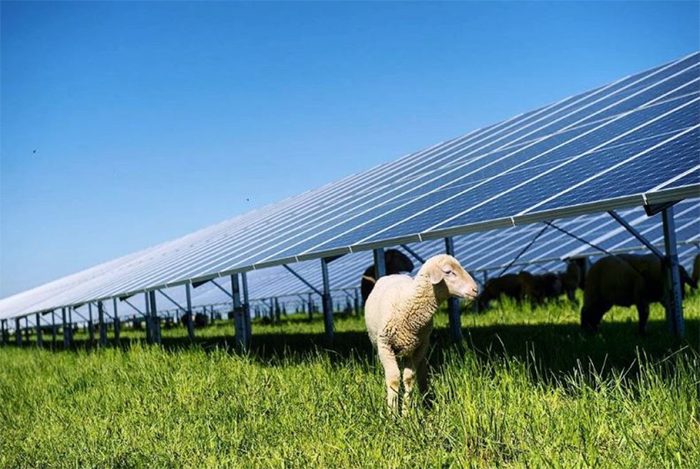Rapid expansion of implemented renewable energy capacity on a global scale is generating a substantial energy storage market. Solar cells, electric vehicles, and lithium batteries are the three developing industries that are propelling exports internationally. This "new three" in international trade has generated unprecedented growth potential for the solar and energy storage industries. Energy storage is currently exhibiting a discernible trajectory of growth, and it is anticipated that by 2024, it will showcase a minimum of four noteworthy trends that will substantially transform the worldwide energy market.
1. Accelerating development of the domestic spot market improves the profitability of energy storage vendors and the economics of projects.
In September 2023, the National Energy Administration and the National Development and Reform Commission of China issued the nation's initial spot market trading guidelines for electricity. This regulation furthers the reform of China's electricity market. The text provides clear guidance on how new energy can participate in the power market in a systematic and stable manner in order to develop a market mechanism that is tailored to their characteristics. In order to maintain stability and continuity of policy, this mechanism must be integrated with the new energy security policy. In addition to attracting new businesses such as load aggregators, energy storage, and virtual power plants, power trading stimulates the market.
In October 2023, the Energy Bureau and the NDRC reissued the Circular on Further Accelerating Electricity Spot Market Construction. In this announcement, the electrical spot market construction requirements were clarified. The government has consistently enforced electrical spot market policies since September 2023, showcasing its dedication to fostering market expansion. The majority of provinces and regions are expected to implement a long-term settlement trial operation by 2024. Notably, the most rapidly developing provinces and regions are projected to transition directly to the official operation.
Shandong and Guangdong are forerunners in the markets for auxiliary services and spot power energy with regard to independent energy storage. It is anticipated that the realisation of profitable domestic energy storage projects will be fully realised by 2024, as these regions accumulate experience in this field. This will increase the competitiveness and maturity of the Chinese power market while enhancing the economics of energy storage projects. Market forces and policy are expediting the development of the domestic power spot market, which is fostering the expansion of the energy storage industry.
2. Cost advantage opens the door to competition, emphasising the competence of the industry chain. Firms can generate profits through increased equipment self-research and manufacturing at the present pricing level.
The sales and shipments of energy storage companies have experienced substantial growth in tandem with the expansion of the domestic and international energy storage markets. Self-production and equipment development capabilities of the highest calibre are required for vendors to generate a profit at the current price level. To reduce expenses and increase product competitiveness, comprehensive self-study of the entire stack—from electric core to PCS to system integration—and knowledge of electrochemical, power electronics, and digitalization technologies are required. The core segment scale effect reduces both direct and non-material costs. Moreover, the enterprise's gross margin is significantly greater than the sum of all outsourcings of a single system integration enterprise due to its greater core production capacity and ability to manufacture its own DC side system.
The hardware required for energy storage power plant operation and maintenance software, which detects and monitors power plant condition, is typically available from the majority of modern integrators. The distinction is evident through the monitoring of the degree of refinement, which includes assessing the performance of a single core and promptly identifying thermal runaway characteristics. Profit-maximizing strategies involving automatic operation control that forecast electricity prices could be the next phase of competition. Then, product differentiation will be more apparent, and the ability to manage the entire manufacturing chain through full-stack capacity could increase product dependability. Therefore, energy storage companies must increase their technical prowess and innovate in order to remain competitive in the fierce market.
3. Energy storage offshore is lucrative and has enormous market potential; domestic energy storage firms will continue to expand internationally.

Numerous market-oriented revenue models, including electric energy trading, frequency regulation, standby, and others, increase the price differential and excess returns for offshore energy storage projects under specific conditions, thereby enhancing economic benefits. While domestic energy storage projects continue to advance auxiliary services and spot trading, a significant portion of their revenue is generated through delayed marketization mechanisms such as capacity leasing. Foreign arbitrageable margins are therefore significantly greater than domestic ones.
As a result of the globalisation of the electricity industry, energy storage markets abroad are thriving. Due to supply chain, environmental, and market considerations, the overseas energy storage industry is dependent on external markets for upstream raw materials, downstream parts and components, anode and cathode materials, batteries, and downstream parts and components. Domestic energy storage firms are localising abroad in an effort to overcome these challenges and seize development opportunities.
To expand the industry, the United States and other governments are promoting energy storage as a critical manufacturing sector. In an effort to enhance the industry chain through increased technological investment, research and development, and the production of new energy storage technologies and full-scene applications for future localised development, North America and Europe are establishing independent energy storage supply chains.
Numerous prominent domestic energy storage battery companies acknowledge the significance of the sea, which expedites globalisation through the expansion of exports, construction of factories overseas, and "rolling" of high-end manufacturing capacity around the globe. Aspects of the foreign energy storage market such as the investment climate, human resources, cultural disparities, construction cycle and sales network, industry chain support, and carbon emissions necessitate that domestic energy storage firms respond to market shifts and customer demand with greater care in order to achieve sustainable development.
4. Rapid development of compact storage integration
Emerging applications of distributed illumination and storage are a result of the worldwide demand for renewable energy. The proliferation of electric vehicles and distributed photovoltaic systems presents substantial prospects for the integration of charging and light storage systems. By increasing energy efficiency and decreasing reliance on conventional energy sources, this integrated development concept safeguards the environment.
Second, localities and provinces with the greatest amount of distributed PV capacity desire PV storage that is grid-connected. By modifying time-sharing tariffs, developing power auxiliary service markets, and operating virtual power plants, which increase photovoltaic storage and charging profit opportunities, these regions are responding to the nation's call for renewable energy development. As these locations demonstrate their feasibility, the profit model associated with the integration of charging and light storage will proliferate.
Once more, European optical storage integration is a development that provides the global optical storage industry with insight and inspiration. The evolution of optical storage power stations from passive to active will shape the field's future. In order to attain superior development, leading firms in energy storage are promoting the establishment of an innovative ecosystem.
We must accelerate the development of the "four keys"—photovoltaic, energy storage, hydrogen, energy, and other energy systems—in order to reach a future with zero carbon emissions. Such efforts are the only way to accomplish energy and environmental sustainability and construct a brighter future.








